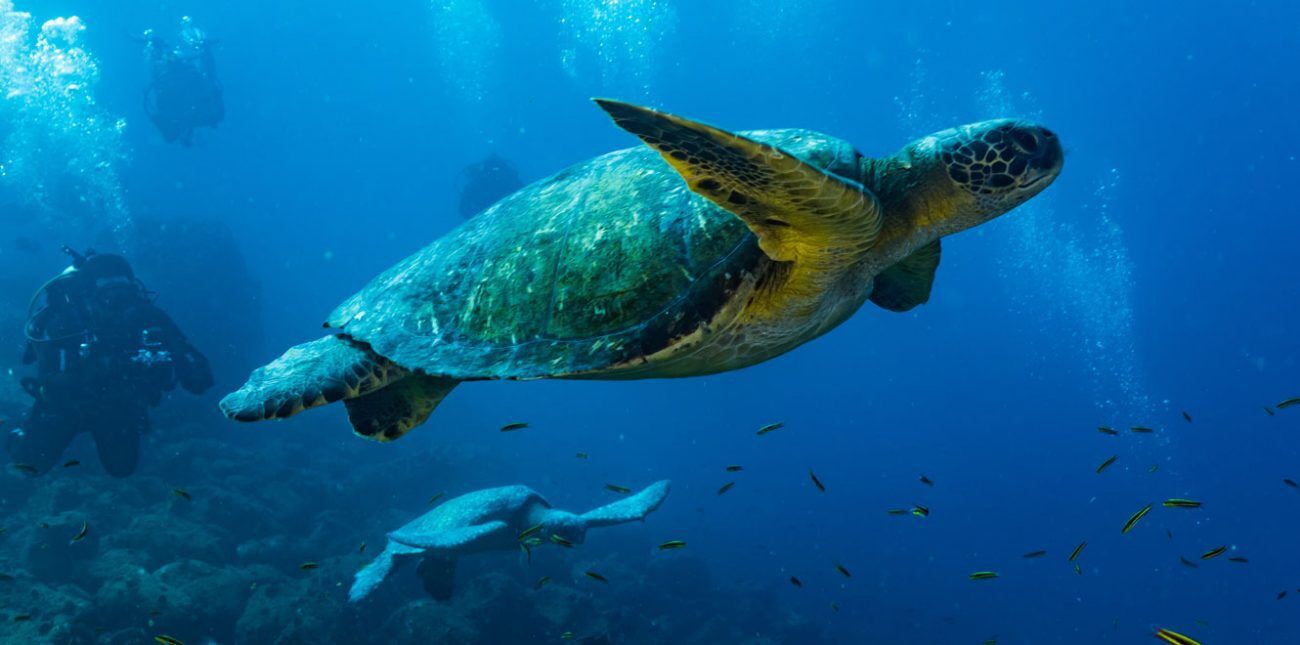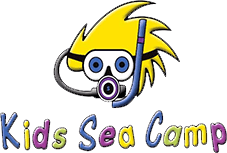Galapagos Liveaboards
The Galapagos is an experience out of a dream. Alone in the deep with a whale shark the size of a school bus, they were accompanied by a school of Hammerheads, like children running to catch the bus. The Galapagos is a truly surreal experience. One can find oneself face-to-face with a whale shark as big as a school bus, swimming alongside a group of Hammerheads that look like a bunch of kids running to catch the bus. It’s common to encounter other fascinating marine creatures like sea turtles and sea lions on a single dive.

You are in good hands.
Suppose you’re planning a family dive trip to the Galapagos. In that case, Family Dive Adventures can handle everything for you, from arranging round-trip air travel details to pre- or post-liveaboard tours within the Galapagos. Our team has been exploring the Galapagos with families and kids for over 16 years, so you’re in good hands.
Younger divers are welcome.
For divers between the ages of 12 and 15, we highly recommend our Kids Sea Camp group family trip. This is a full-boat liveaboard dive charter with additional staff and guides for families. Your kids will also get to dive with other kids. Other families will be on our group dive trips. It’s important to note that the Galapagos is an advanced PADI dive destination due to the presence of large animals. So, kids must be mature and qualified to dive on any Galapagos dive vacation.
Because of the big animals, the Galapagos is an advanced PADI dive destination. Kids must be mature and qualified to dive on any Galapagos dive vacation. Kids Sea Camp has been taking kids and families safely diving in the Galapagos and is known for being #1 in the world for kids and families.
KSC GALAPAGOS, 2025: Tiburon Explorer, July 5th- 12th (Private Charter) ( Two cabins available Tiburon Explorer, July 12th- 19th (Private Charter), (One cabin left) Both weeks hosted by Tom and Margo Peyton
KSC GALAPAGOS, 2026: Tiburon Explorer, July 4th- 11th (Sold Out) July 11-18 (Private Charter) (2 spaces, two cabins available) Both weeks hosted by Tom and Margo Peyton
High Adventure diving
“The three of us swam together for a small piece of eternity just as I began to wonder about finding my way safely home. As I swam up to the shallows through thick schools of fish and sleek Galapagos and hammerhead sharks, I waved goodbye to my two new friends and focused on the squadrons of sharks now surrounding me. That’s the thing about the Galapagos; it always gives you more than you bargained for.” By Margo Peyton, President of Kids Sea Camp and Family Dive Adventures
The Islands possess an untamed beauty and excitement, giving one the feeling of being in another world. Though mere specks in the Pacific Ocean, these stark volcanic islands have emerged as one of Earth’s most significant biological wonders. Due to their geographical isolation and relative youth, a unique and fascinating array of plant and animal life has evolved there, representing a crossroads in evolution. To visit the Galapagos is to take an incredible journey back in time and imagine the lifetime of memories created on this family vacation.
Why do we go? See Gallery
Sample Itinerary (Itinerary subject to change due to weather conditions.)
- Day 1 (Day of arrival): On Saturday, you will arrive aboard at San Cristobal Island, followed by a checkout dive at Isla Lobos. This site is home to many sea lions, sand dollars, black-blotched stingrays, puffers, and sea stars.
- Day 2: Three dives are scheduled at North Seymour and Mosquera, which allow seeing Galapagos garden eels, sea turtles, sea lions, fur seals, golden eagle rays, yellowtail grunts, bigeye jacks, schools of snappers, and frequent sightings of whitetip reef sharks, hammerheads, and Galapagos sharks.
- Day 3 – 5: Three dives will be made at Wolf Island or Darwin Island daily. These dive sites are well known for the high presence of hammerheads and big Galapagos sharks. There is also the likelihood of seeing marine turtles, various types of rays, mantas, dolphins, moray eels, and invertebrates.
- Day 6: Three dives are scheduled at Roca Redondo and Vincente Roca, where sunfish, hammerheads, white-tip reef sharks, manta rays, sea horses, and Galapagos sharks can be spotted.
- Day 7: On this day, two dives at Cousins Rock and Bartolome Island are made in the morning, followed by a guided visit to Puerto Ayora on Santa Cruz Island in the afternoon. Cousins Rock is a perfect site for seeing black juvenile corals, Galapagos seahorses, octopuses, hammerheads, Galapagos sharks, green sea turtles, eagle rays, and schools of barracudas.
Day 8 (Day of departure): Check-out day and leave from San Cristobal.
Diving with Dive Encounters or Explorers Venture fleet
The Liveaboards
- Tiburon Explorer (liveaboard): 2024-2025: Pricing from $6,995 to 7,195
The packages include
- Northern Itinerary: Wolf and Darwin diving
- Seven nights diving
- Land tours
- Free nitrox
- Private divemasters
- Hammerheads
- Turtles
- Giant oceanic mantas
- Whale sharks
- Four dives per day
- All meals
- Beverages
Not included in the packages
- Airfare (international and domestic)
- Insurance
- Equipment rentals
- Certification or specialty courses
- Hotel stays and day rooms
- Crew gratuity
- Port /park fees and or taxes
- Fuel surcharges (when applicable, cancellation/trip, and dive insurance are highly recommended)
